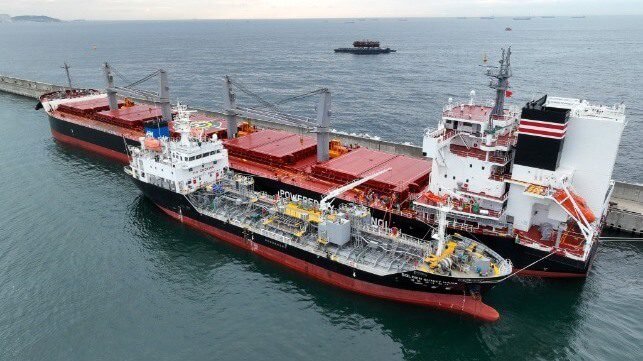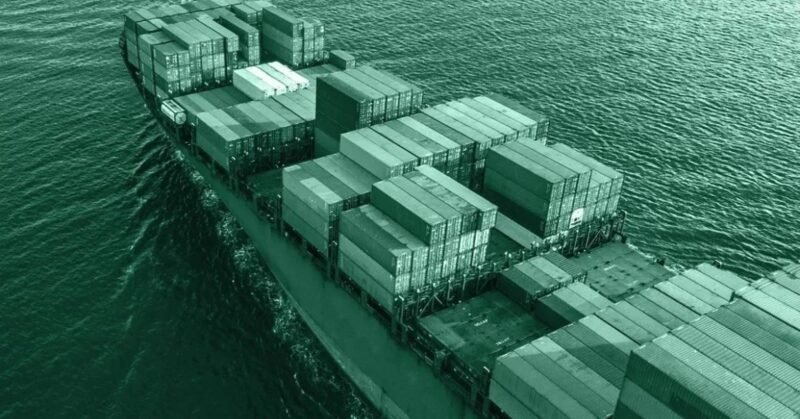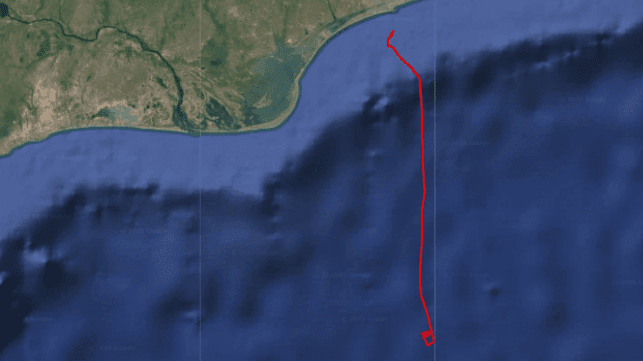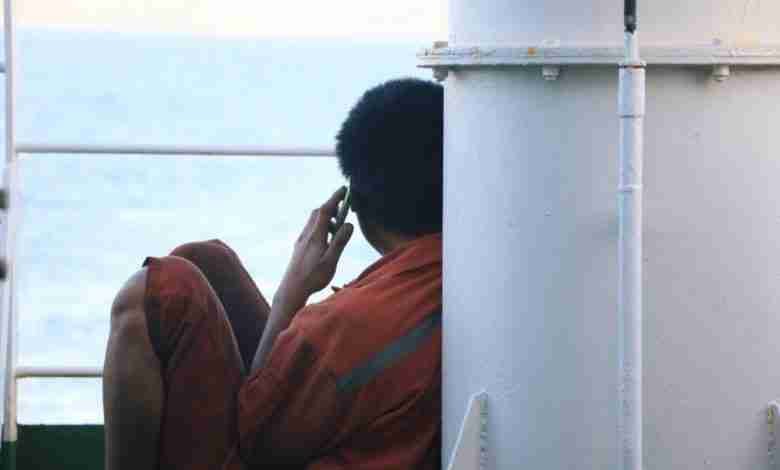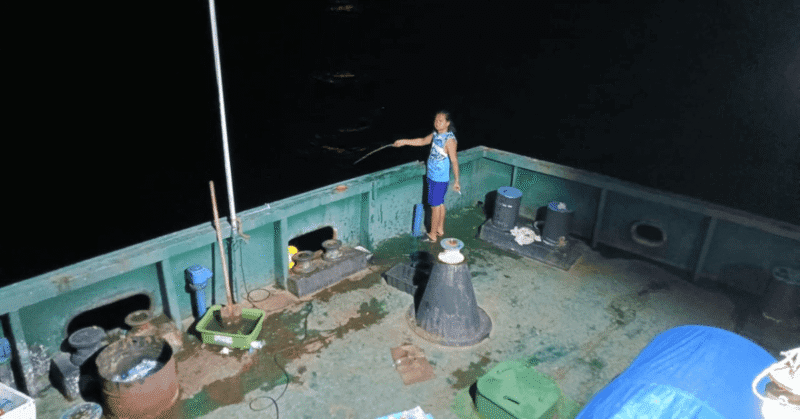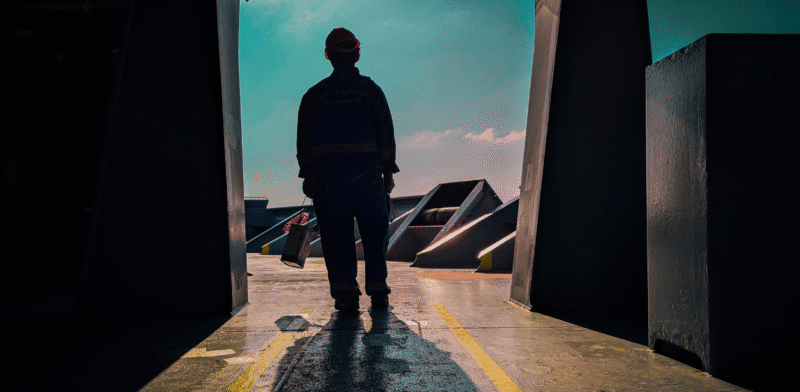Following Stories compiled in this News Digest for the week from 17 Jul 2022 to 24 Jul 2022 in descending order:
- Hartlepool maritime art show inspired by Tall Ships opens
- Tanker Ships Deliver Fuel to MSC Ships Via CONSOL in Support of RIMPAC 2022
- Wind Power Returning To Open Seas, Now With AI
- First Bulker with Rigid Sail Launched in Japan
- Costa Cruises’ Ship Captain Awarded Navy Medal For An Exceptional Rescue
- India and UK sign MoU for seafarers COC recognition
- US CDC Ends Cruise Ship COVID-19 Program
- Inmarsat issues guidance on fortifying cyber security
- World Maritime Theme 2023 puts a spotlight on environmental legacy
- OOCL adopts e-Bill of Lading
- ITF claims victory after ‘dockers’ clause’ passes legal test
- Methanol has immediate benefits to support shipping’s green transition
- ‘Go back!’ Rage in Norway as cruise passengers told they are ‘not welcome’
- India: Gaurav Cruises builds Asia’s 1st high-speed craft Kokan Gaurav in Goa
- Cyprus – punching above its weight in global shipping
- Cruising is Back, Just in Time for Debt-Laden Cruise Companies
- International Maritime Bureau confirms piracy decline in Gulf of Guinea
Hartlepool maritime art show inspired by Tall Ships opens
24 Jul 2022
A new exhibition of maritime art has been opened ahead of Hartlepool’s hosting of the Tall Ships festival.

Hartlepool Museums Service has delved into its collection to put on the When The Boat Comes In exhibition at Hartlepool Art Gallery.
The free exhibition opened on Saturday and will go on until 5 November.
The Tall Ships show will be held in Hartlepool in July 2023. Almost a million people attended when it was held in the town in 2010.
Angela Thomas, art gallery curator at Hartlepool Borough Council, said: “We’re all incredibly excited to welcome back the Tall Ships in 2023 and their return gives us an opportunity to showcase the remarkable works of art we have here in Hartlepool. Reference
Tanker Ships Deliver Fuel to MSC Ships Via CONSOL in Support of RIMPAC 2022
24 Jul 2022
Underway, in the waters off the coast of Hawaii, Military Sealift Command (MSC) chartered tanker ships MT Maersk Peary and SLNC Goodwill are providing at-sea fuel deliveries to the MSC’s Combat Logistics Fleet (CLF) ships that are supporting the underway phase of the bi-annual maritime exercise, Rim of the Pacific (RIMPAC) 2022.

Maersk Perry is delivering JP5 aviation fuel and diesel ship fuel and Goodwill is delivering diesel ship fuel to MSC fleet replenishment oilers USNS Henry J. Kaiser (T-AO 187) and USNS Pecos (T-AO 197), as well as MSC’s dry cargo/ammunition ship USNS Washington Chambers (T-AKE 11), through a series of consolidated cargo operations or CONSOLs. MSC reintroduced conducting tanker to oiler CONSOLS-at-sea in 2015, as a way to utilize a flexible platform that allows MSC to operate worldwide in a variety of missions.
RIMPAC 2022 is the first time this technology is being used during a major exercise in the Pacific area of operation.
During a CONSOL, the specially outfitted MSC-controlled tankers transfer the cargo fuel via connected lines, underway. Essentially, the tanker ships create a gas station, at sea, for ships.
Unlike a quick trip to the gas pumps for a car, CONSOLing can take hours to complete. This creates a unique set of challenges for the ships conducting the operations. CONSOLing is a dance between two ships. Each must maneuver alongside the other, and maintain a consistent speed and course. Because of their size, tanker maneuverability becomes a challenge.
To keep skills sharp, and to prepare for any situation that comes at them, the tankers and the CLF ships train. According to Laycock in May of 2021, Maersk Peary conducted three back-to-back CONSOLS, and in April and May of this year, the ship conducted five evolutions, using both the ship’s forward and aft CONSOL stations.
The ability to CONSOL CLF ships at-sea means they do not have to return to a port to refuel at a Navy or commercial fuel pier. Eliminating those round-trips into port reduces cost and increases time on-station to support the fleet. Reference
Wind Power Returning To Open Seas, Now With AI
23 Jul 2022
A 20% savings in fuel efficiency for a two-day retrofit is nothing to sneeze at, and that explains why the leading cargo shipper Kawasaki Kisen Kaisha, Ltd. is adding more wind power punch to its existing roster of cargo ships. The company has just ordered another three Seawing sails from the company Airseas on top of a previous order. Better yet, from a carbon-cutting perspective, “K” Line also expects to leverage artificial intelligence to squeeze even more clean power from centuries-old seagoing technology.

If the name Airseas rings a bell, that’s probably because of the connection to the well known aircraft maker Airbus. Airseas sailed across the CleanTechnica radar last fall, when we noted that it was founded by former engineers at Airbus (for the record, it is also funded and supported by Airbus, the EU, and other partners).
According to Airseas, it only takes about two days to retrofit a ship with a Seawing sail, and owners can anticipate a quick return for their wind power investment. The typical fuel savings is about 20%.
If that sounds like a lot of return for just one sail, Airseas has an explanation. The sail behaves more like a kite on a string than a sail lashed to a mast.
In practice, the results can vary. The company states a floor of 10% savings and a ceiling of up to 40%. As for the operation of the sail, there is no hoisting of anything by anybody.
Seawing is just one among several ways in which wind power is going back to work for the shipping industry. CleanTechnica has recently taken note of pipe-shaped, vertical “sails” that spin, and rigid sails that act like airplane wings, based on technology developed for racing yachts.
One variation that escaped the CleanTechnica radar is WISAMO, a sort of puffy wing sail developed by Michelin, which popped up on the scene last fall. Reference
First Bulker with Rigid Sail Launched in Japan
23 Jul 2022
The first installation of a rigid, winged sail has been completed on a commercial bulker with the vessel recently floated at the Oshima Shipyard in Japan. The bulker being built for Mitsui O.S.K. Lines is scheduled to enter service in October as the first demonstration of MOL’s Wind Challenger project.

The concept originated as an academic research project in 2009 with MOL and Oshima later taking the lead to commercialize the technology for wind-assisted propulsion. The first ship to deploy the rigid sail was ordered in December 2020 and is nearing completion at the Oshima Shipyard. The vessel is a 99,000 dwt bulk carrier measuring 770 feet in length. Specifics on the height of the sail were not announced but in concepts MOL cited a height of nearly 170 feet when fully raised at sea, and it can be lowered to permit the vessel to pass under overhead obstacles or while docked in port for loading and unloading.
The sail was built separately at the Oshima Shipyard and completed earlier this year for on-dock tests before being fitted to the bulker. MOL reports that extensive CFD and wind tunnel experiments were conducted during the development to estimate the thrust generated from the sail. The testing confirmed that auxiliary thrust is converted to fuel efficiency with consideration of the size of the ship. MOL expected a reduction of five percent in fuel consumption on the Japan-Australia route and eight percent on the Japan-North America west coast route for a 100,000 ton bulk carrier.
Weight, of course, was a key consideration in the development of the sail. The Wind Challenger is made of a glass fiber reinforced plastic (GFRP) to ensure that it does not impact the vessel’s ability to load and transport cargo. The lightweight material made it possible to increase the area of the sail with minimal impact on the vessel’s stability.
The operation of the Wind Challenger is fully automated. According to MOL, the sail will automatically detect the strength and direction of the wind with a sensor. The system will extend the sail when the wind is weak and lower the sail when the wind is strong as well as automatically rotating the sail to orient it to the wind direction.
The first vessel to be fitted with the technology is a coal-carrying bulker that will be operated by MOL for Tohoku Electric Power Co. Before its commissioning, MOL and Oshima plan to conduct sea trials and tests of the Wind Challenger. Reference
Costa Cruises’ Ship Captain Awarded Navy Medal For An Exceptional Rescue
23 Jul 2022
Pietro Sinisi, captain of Costa Cruises, was reportedly rewarded with the prestigious Navy Bronze Medal of Merit in Rome in the presence of Vice Admiral Nicola Carlone, the Italian Coast Guard’s Commandant, at a ceremony held at the General Command of the Harbour Masters Corps.
The Commandant of the Italian Coast Guard was awarded the medal. It was handed over by the delegation of the Italian Navy Chief, Admiral Enrico Credendino, during the military ceremony arranged to mark the 157th anniversary of the Harbour Masters Corps that had taken place on 20 July 1865.
When motor vessel Kilic caught fire, Captain Sinisi, per Costa Luminosa’s command, supported complex rescue operations showing exceptional expertise and extraordinary nautical skills, successfully ensuring the rescue of the 11 crew members.
Despite poor weather, Captain Sinisi was able to establish and maintain the safety of his guests even while putting a prompt intervention in place simultaneously. The resolution turned out providential for the successful rescue operation. With his humble behavior, Sinisi brought prestige to the Italian Navy’s image in the institutional framework.
The rescue mission started on 21 November 2018. At midnight, Costa Luminosa, which was then heading toward the port of Katakolon, got a distress call from the Rescue Coordination Center of the Greek Coast Guard. Sinisi was ordered to assist the motor vessel Kilic, a cargo vessel primarily used for transporting fish, which was in serious trouble due to a fire outbreak on board. The crew comprising 11 men was rescued by a Costa Luminosa tender that Marco Genovese, the Safety Officer steered and transshipped to another cargo vessel that was involved in the operations previously by the Greek Coast Guard.
Captain Pietro Sinisi said he was honored to receive such a prestigious award that once again proves that safeguarding human lives is always prioritized at sea. He added that the recognition goes to teamwork, which was fundamental to completing the rescue operation in precarious conditions. Reference
India and UK sign MoU for seafarers COC recognition
22 Jul 2022
The India-UK trade talks are on track. Speaking to media after signing two MoUs and a framework agreement with UK, Commerce Secretary B. V. R. Subrahmanyam said that the India-UK FTA negotiations would be concluded by 31st August and after internal approvals on both sides, the agreement would be ready to be signed as per convenience of the both leaders. “Irrespective of party in power in UK, the logic of FTA with India is irreversible,” he added.
Earlier, Shri B.V.R. Subrahmanyam, Commerce Secretary, Government of India and Mr. James Bowler, Permanent Secretary, Department of International Trade, United Kingdom; India and the UK signed two MoUs on mutual recognition of educational qualifications including maritime education and a Framework Agreement on health care work force. These agreements will facilitate closer alignment on education between India and UK, enhance short-term bilateral mobility and ensure mutual recognition of qualifications.
The MOU on maritime education qualification was signed by Shri Amitabh Kumar, Director General of Shipping on behalf of Government of India. This MoU will pave the way for the two governments to mutually recognize the certificates of maritime education and training, competency and endorsements of seafarers issued by each other. The MoU will prove beneficial for employment of seafarers of both the countries and would make them eligible for employment on ships of either party. India being a seafarer supplying nation with large pool of trained seafarers, it is expected to be significantly benefitted by the MoU. Reference
US CDC Ends Cruise Ship COVID-19 Program
22 Jul 2022
The U.S. Centers for Disease Control (CDC) has ended its COVID-19 program for cruise ships as cruise lines use their own mitigation programs.

The CDC’s COVID-19 cruise ship program has been a hallmark of the coronavirus pandemic after many of the initial high-profile outbreaks took place on board ships.
The CDC’s “no sail order” for cruise ships, initiated in March 2020, led to a 15-month standstill in the industry as other forms of passenger travel remained open to the public. The no sail order was extended several times before the CDC eventually issued a Conditional Sailing Order that allowed cruise ships to return to passenger operations in June 2021 with strict health and safety protocols in place. Since then, the CDC’s cruise ship program has slowly been scaled back, moving to a voluntary program beginning in January 2022.
The program has used a color-coding system published by the CDC to help rank transmission levels on individual ships. As of July 18, the program has ceased and the webpage for the color-coding system has been removed.
The CDC says that although the program has ended, it will continue to provide testing recommendations for cruise ship operators and cruise ships will continue to report COVID-19 cases to CDC. Reference
Inmarsat issues guidance on fortifying cyber security
21 Jul 2022
Satcomms provider Inmarsat has published guidance on improving cyber security in the maritime industry beyond baseline regulatory compliance.

The IMO’s 2021 cyber risk management code (IMO 2021) sets a framework and baseline for cyber security resilience, but Inmarsat advocates for going beyond simple regulatory compliance.
“The IMO guidelines on maritime cyber risk management have helped stakeholders to address cyber threats, but the nature of digital attacks continues to evolve due to advances in computing technology and developing geopolitical conflicts,” said Ben Palmer, President, Inmarsat Maritime.
With cyberattacks against the maritime sector on the rise, the Inmarsat report promotes Unified Threat Management (UTM) as a foundation for managing cyber risks. UTM combines a range of defences like antivirus programmes, firewalls, intrusion and detection systems and content filters in one software and hardware package. Inmarsat offers its own Fleet Secure UTM which it says streamlines the installation and operation of security infrastructure.
By making security easier to configure and maintain, UTM also makes proactive cyber security more accessible to maritime companies, said Inmarsat.
The report notes a 2021 penetration test across 100 vessels in a particular fleet. Of 292 emails sent to fleet nodes, 92% were opened, a link inside was clicked by 90 seafaring officers and 44 of those went on to enter sensitive information on a website.
Should bad actors succeed in accessing systems, vulnerabilities within our industry include: Bridge systems, Cargo handling and management systems, Propulsion and machinery management and power control systems, Access control systems, Passenger servicing and management systems, Passenger facing public networks, Administrative and crew welfare systems, and Communication systems.
Inmarsat uses Danish tanker company Evergas as an example of a shipping company facing its cyber security responsibilities. Reference
World Maritime Theme 2023 puts a spotlight on environmental legacy
21 Jul 2022
“MARPOL at 50 – Our commitment goes on” has been selected as the upcoming theme for the International Maritime Organization’s (IMO) 2023 World Maritime Theme, which will culminate in a World Maritime Day celebration on 28 September next year.

As explained, the theme reflects the organization’s long history of protecting the environment from the impact of shipping via a robust regulatory framework and emphasizes its ongoing commitment to this important work.
The theme spotlights the International Convention for the Prevention of Pollution from Ships (MARPOL), which covers the prevention of pollution of the marine environment by ships from operational or accidental causes.
The theme, which promotes discussions on the next phase of IMO’s work to further protect the planet and the oceans, is also linked to the UN 2030 Agenda for Sustainable Development and the 17 Sustainable Development Goals (SDGs). These include affordable and clean energy (SDG 7); industry, innovation and infrastructure (SDG 9); climate action and sustainable use of the oceans, seas and marine resources (SDGs 13 and 14); and the importance of partnerships and implementation to achieve these goals (SDG 17).
The IMO Council, meeting for its 127th session, endorsed the theme following a proposal by IMO Secretary-General.
The Torrey Canyon oil spill in 1967, the largest oil disaster at the time, was one of the key moments that led to the development of the MARPOL Convention. The 1970s saw increased global awareness of the need to protect the marine environment from all sources of pollution, subsequently resulting in the adoption of the MARPOL Convention and the 1978 MARPOL Protocol in 1973 and 1978, respectively.
Today, MARPOL covers pollution of the sea by oil, noxious liquid substances in bulk, harmful substances in packaged form, sewage from ships and garbage from ships, air pollution from ships, and regulation of energy efficiency.
It also allows for the adoption of special areas with even stricter controls on operational discharges. The convention has evolved through the years. Some highlights include the requirements for oil/water separators on ships, phasing out of single hull oil tankers in 2010, the establishment of several special areas including the Antarctic area, the introduction of the mandatory IMO Member State Audit Scheme (IMSAS) in all MARPOL annexes, the introduction of the IMO 2020 global sulphur limit, and the adoption of technical and operational measures to enhance the energy efficiency of ships. Reference
OOCL adopts e-Bill of Lading
21 Jul 2022
Orient Overseas Container Line (OOCL) is introducing Electronic Bills of Lading (eBL) to enhance efficiency across the global supply chain.

OOCL’s eBL solution is powered by digital solutions provider IQAX Limited and built on Global Shipping Business Network (GSBN)’s blockchain platform.
The new eBL solution offers issuance of online Bills of Lading, as well as enabling different parties to manage the eBL and to perform title transfers, surrenders for delivery, status updates and history reviews, said OOCL statement.
OOCL said the adoption of eBL will increase security and accuracy, reduce supply chain uncertainties and delays, and control costs. “OOCL has always been a pioneer in deploying the latest technology to drive a real, tangible improvement in operations,” said Kenny Ye, Chief Operating Officer of OOCL.
The news comes as part of OOCL’s efforts to achieve Environmental, Social and Governance (ESG) goals, such as tackling the challenges of climate change and assuring sustainability.
Switching to a paperless solution will enable OOCL to help eliminate waste generation and the consumption of forest resources, and to minimise its carbon footprint. Reference
ITF claims victory after ‘dockers’ clause’ passes legal test
20 Jul 2022
A Dutch court has ruled in favour of the International Transport Workers’ Federation (ITF) and ordered ship managers to abide by a contractual clause preventing seafarers carrying out lashing work on container ships.

The 2018 Non-Seafarers’ Work Clause was added to International Bargaining Forum (IBF) collective bargaining agreements in 2018.
It followed long-running attempts by the ITF to include a clause to protect dockers’ rights within a seafarers’ collective bargaining employment agreement.
The IBF is shipping’s largest single collective bargaining agreement.
The ITF claim for breach of the clause was brought in a Rotterdam District Court ruling against ship managers Marlow Cyprus, Marlow Netherlands and Expert Shipping.
The ruling means employers that have signed up to the IBF agreement must ensure that container lashing work is handled by dockers and not seafarers.
Although the ITF and Joint Negotiating Group (JNG), which represents employers, have developed a close working relationship — and recently successfully renegotiated the IBF agreement — the non-seafarers’ work clause is one of the most contentious issues between them.
The ITF has argued that the intention of the clause is to protect seafarers’ safety, while employers have argued that the clause is being used to further the ITF’s influence among shoreside workers.
The use of crew in cargo-handling work is particularly relevant in the shortsea liner trades where seafarers have been regularly used in container lashing work.
The Rotterdam District Court ruled that the clause is in the interests of seafarers rather than to protect dockers’ work. It also said solidarity between dockers and seafarers is desirable. Reference
Methanol has immediate benefits to support shipping’s green transition
20 Jul 2022
A new video has been released by Methanol Institute (MI) and Fastwater, highlighting the benefits of methanol as a marine fuel for small craft operating in ports and inshore waters.
The film highlights the launch in late 2021 of the first pilot boat operated by the Swedish Maritime Administration (SMA) converted to run on methanol by the Fastwater consortium.
The conversion is the first of a potential fleet conversion by the SMA, adopting methanol to lower pollution and cut carbon emissions. The demonstration, held in Stockholm, Sweden, provided a showcase for the ease and practicality of converting an existing marine engine to run on methanol, as well as the simplicity of the bunkering process.
The pilot boat runs on sustainable, renewable biomethanol provided by Södra, which transported the plant-based bio-methanol — used onboard the boat — by road to the pilot station.
With funding from the European Commission, Fastwater is a consortium of Europe’s maritime research and technology leaders engaged in a project to demonstrate the feasibility of converting existing harbour craft to methanol fuel. It focuses on high impact outcomes, employing methanol as a future-proof alternative marine fuel to create a fast track to carbon-neutral shipping.
Methanol has regulatory approval for use as a fuel by the International Maritime Organization (IMO) and has been accepted by classification societies, flag and port states as well as by vessel operators and charterers as a safe, compliant and efficient marine fuel. Reference
‘Go back!’ Rage in Norway as cruise passengers told they are ‘not welcome’
20 Jul 2022
CRUISE passengers have been told they are “not welcome” in Norway. An anti-cruise group has slammed holidaymakers with angry posters at several Norwegian ports.

In Oslo, Bergen, Stavanger and Trondheim anti-cruise posters have been put up by angry activists.
CruiseNOTWelcome campaigns against cruises as an attempt to raise awareness of the environmental damage they can cause.
One of the posters shared on Twitter read: “You have just arrived in my home town on a floating block of flats that burn asphalt for propulsion and energy.
The founder of CruiseNOTWelcome, Bengt Erik Waldow, said: “The industry is doomed because the whole concept of moving a floating town from port to port can never be CO2 efficient no matter what fuel they use.”
The group also claims that ships have poor working conditions and that companies do not pay sufficient taxes.
Waldow said cruise ships were a particular problem in Bergen and Stavanger where tourists flood the town centre.
The group is calling on the Norwegian Government to ban cruise ships permanently from the country.
Waldow said they would the Government to just “shut the harbour areas and use them for something more useful and environmentally sound”..Reference
India: Gaurav Cruises builds Asia’s 1st high-speed craft Kokan Gaurav in Goa
19 Jul 2022
Redefining travel in the Kokan region is the RoPax vessel “Kokan Gaurav” from Mumbai Ferry Warf to Kashid and Dighi, Raigad. It is Asia’s 1st high-speed craft (HSC2000) RoPax Vessel in India and is being built in Goa by Gaurav Cruises Pvt. Ltd.
This ultra-modern, luxurious high-speed craft, built under the IRS flag, will reduce the travel time from 5.50 hours to less than 3 hours, travelling 49 nautical miles, and will be the safest mode of transport in the region. The HSC craft, expected to be operational by January 2023, will ferry 260 passengers, 20 cars and 11 bikes from the ferry warf and will have A/C, Business and VIP classes. It will be a multi-purpose vessel for logistics, travel, tourism and entertainment.
Dr. Mahendra Kalyankar, IAS (District Collector and District Magistrate, Raigad), Gautam Pradhan (Principal Promoter Director, Gaurav Cruises Pvt. Ltd.), Arun Nanda (Chairman, Mahindra Lifespace Developers Ltd. and Mahindra Holiday & Resorts (I) Ltd.), Amit Saini, IAS (Chief Executive Officer, Maharashtra Maritime Board), Amitabh Kumar, IRS (Director General of Shipping and Shipping Regulator of India), Ashish Kumar Singh, IAS (Additional Chief Secretary, Transport & Ports), Shravan Hardikar, IAS (Inspector, General, Registration and Controller of Stamp), Pushkar Bendre (Promoter Director, Gaurav Cruises Pvt. Ltd among senior dignitaries were present on this occasion.
Gautam Pradhan (Director, Gaurav Cruises Pvt. Ltd.) said, “He was guided and supported by all the Government authorities to make this project a possibility inpsite of multiple challenges; he further added that this ROPAX will be a role model for others to follow. With the ambition to make tourism in Kokan of international standards he said that his resort in Shriwardhan will be accessible in 3.30 hours from Mumbai via ROPAX and 45 minutes by chopper from Juhu. This is the only resort in India that would be connected by all the 3 means of transport land, water and helicopter. Reference
Cyprus – punching above its weight in global shipping
19 Jul 2022
Cyprus Shipping Deputy Minister, Vassilios Demetriades, aptly describes the country as, “Small in size, but big in shipping”, as it continues to grow its maritime ambitions.

The Deputy Shipping Ministry was set up in 2018 underscoring the importance of the maritime industries. Speaking to Seatrade Maritime News at Posidonia 2022 recently Demetriades explained what he believes has been achieved and set out plans for the future.
Cyprus is perhaps best known as a ship management and owning centre and over the last decade it has seen a three-fold increase in the number of companies registered under its tonnage tax system from 95 to 285 at present. In terms of shipowning the country has a fleet of around 1,100 vessels with a combined gross tonnage of roughly 25m gt.
The pandemic saw Cyprus demonstrating its commitment to the shipping industry and its seafarers, who endured the hardship of the crew change crisis globally and regulations that saw them confined to vessels for months on end. “From the very first month of the pandemic back in March 2020 we declared seafarers as essential workers facilitating up to now, and making possible, the repatriation and crew change of over 65,000 seafarers,” Demetriades said.
Cyprus also launched an initiative to vaccinate 40,000 seafarers from its national quota.
On the back of its role as a ship management and shipowning centre Cyprus is seeking to grow its services sector to become a fully-fledged maritime centre and the Minister notes they have been successful in attracting the likes of P&I Clubs, marine equipment providers, and technology companies.
Building on its success maritime Cyprus launched its SEA Change 2030 vision last October – SEA standing for Sustainable, Extrovet and Adaptable. Under these three pillars . It contains 35 individual actions to deliver sustainable progress for shipping.
As shipping grapples with the transition to low and zero carbon fuels Cyprus has introduced incentives as part of its tonnage tax system. Owners and operators going beyond global commitments by IMO can enjoy up to a 30% discount on their tonnage tax. Reference
Cruising is Back, Just in Time for Debt-Laden Cruise Companies
18 Jul 2022
It was a grand show, the first in-person reunion in three years of cruise industry professionals from around the world. Three days of nonstop fun and excitement. And back in Miami Beach at last, in the newly renovated and spectacular Miami Beach Convention Center, after spending the last two years it was held (2018 and 2019) in Fort Lauderdale. It’s been a long wait.

The annual Seatrade Cruise Global convention brings together the best and brightest the industry has to offer. The exhibit floor is a cruise-lovers’ wonderland – destinations and ports on the one side, shipbuilders, engine makers, satcom companies and suppliers of every imaginable product and system on the other. There’s free handouts and tote bags and lots of regional food and drink to enjoy. Seminars are held on key industry issues, and cruise lines hold press conferences to tout their unique offerings.
And then there are the after-hours parties, held at fancy Miami Beach hotels or night spots, where the real action is. Business gets done, and people are just glad to see each other again, partying well into the night. Fortunately, the exhibit floor doesn’t open till ten in the morning.
Masks were few and far between, but everyone had to provide proof of vaccination or undergo a daily rapid antigen test to gain entry. You were issued an orange wristband as evidence of vaccination and had to wear it everywhere. The long arm of COVID.
The sustainability message was another recurrent theme. “We’re ready to plug in,” said MSC’s Vago, referencing the industry’s commitment to hybrid propulsion systems and shore power wherever available.
CLIA’s Kelly Craighead noted the industry’s commitment to first achieving carbon-neutral operation and then net-zero emissions by 2050, the use of shoreside power by 32 percent of ships today and 67 percent in five years, and that CLIA will join the Global Maritime Forum’s Call to Action for Shipping Decarbonization. For the cruise industry, the Call to Action involves not just sustainable transportation (i.e., propulsion systems), but extends to hospitality on board
All of this is all fine and dandy, and it’s good to see the cruise industry finally catching up with the rest of maritime when it comes to issues like sustainability and decarbonization. But on the financial front there’s still lots of work to do. Reference
International Maritime Bureau confirms piracy decline in Gulf of Guinea
17 Jul 2022
The International Maritime Bureau (IMB) in its half-year report of 2022 has lauded the reduction in piracy in the globe and expressed optimism that it is a new dawn for the shipping community globally.

This is coming on the heels of the Bureau receiving the lowest number of reported incidents for the first half of the year since 1994, evidencing its efforts in raising awareness to make the waters safe globally.
The Gulf of Guinea Declaration on Suppression of Piracy has confirmed that there has not been any case of Seafarers kidnap one year after the May 2021 declaration. This is considered commendable progress in comparison to the 2020 statistics when 130 seafarers were kidnapped.
The status report from the GoG declaration also confirmed that there has not been any case of kidnap for ransom in 2022, as against 20 cases in 2020 and 12 in 2021.
The Director General of the Nigerian Maritime Administration and Safety Agency, NIMASA,Dr Bashir Jamoh said that Nigeria is committed to sustaining the momentum of the success recorded in recent times in the fight against piracy in the region.
While commending the progress, Baltic and International Maritime Council, BIMCO the world’s largest direct-membership organization for ship-owners, charterers, shipbrokers and agents called for the effective and full deployment of Deep Blue Assets on Anti-piracy tasking.
Efforts of the Nigerian Navy in clamping down on pirates camps, the Deep Blue project C4i coastal surveillance and collaboration with international Navies for law enforcement off Nigerian waters and the series of meetings under the umbrella of the Gulf of Guinea maritime coordination Forum, Shared Awareness and DEconfliction, GoG/SHADE were identified as key to the success in the war against Piracy in the Region.
On its part, the International Maritime Bureau IMB has also confirmed that no case of vessel hijack took place in Nigerian waters in the first half of 2022. The ICC and International Maritime Bureau (IMB) have confirmed that the first half of 2022 witnessed the least cases of piracy globally in 28 years with only 58 reported cases as compared to 68 within same period in 2021. Reference
Note: All above news items compiled in this digest should be considered as news in brief. For detailed news, please refer to reference link, mentioned with each item.
Share it now






